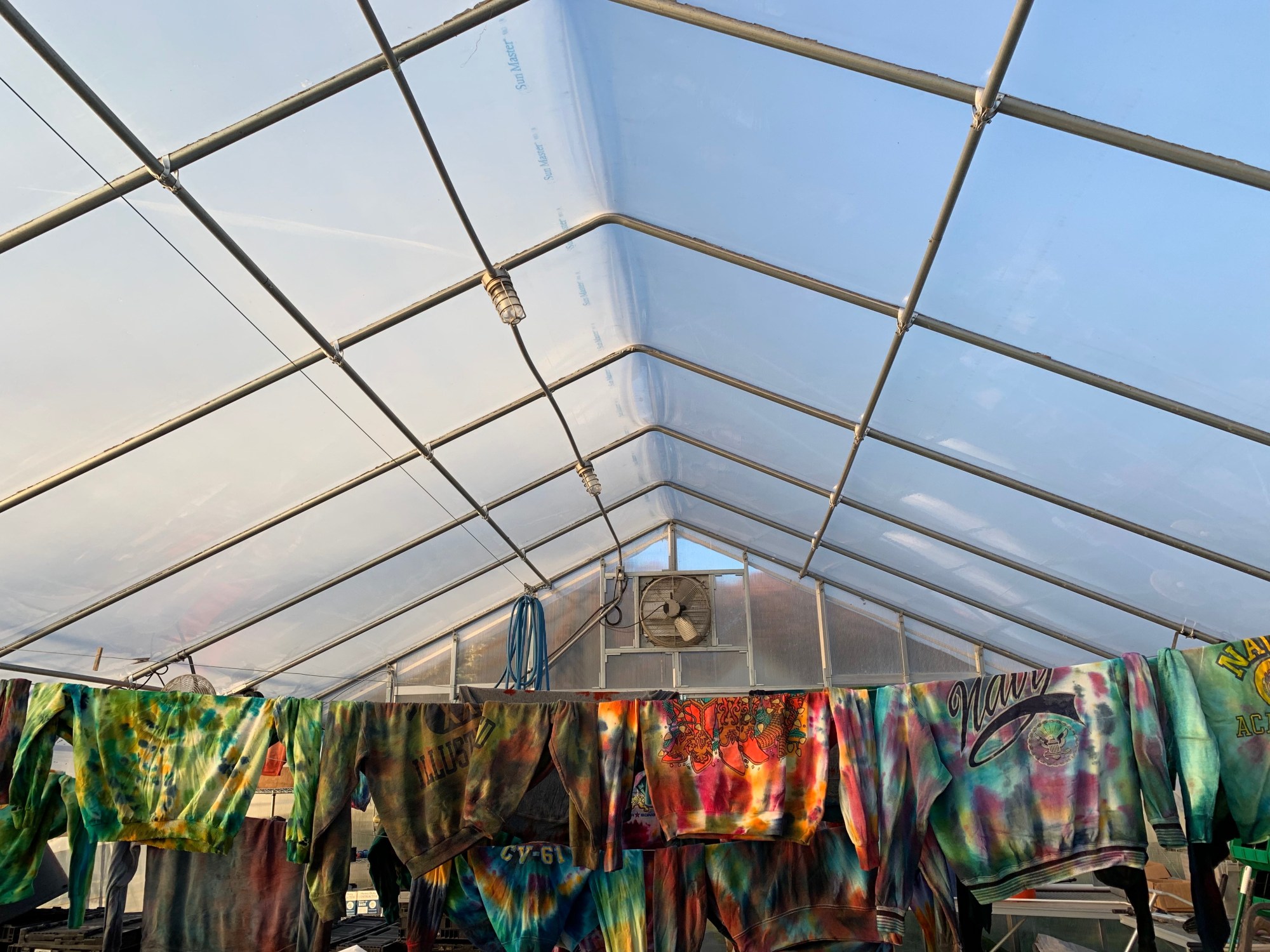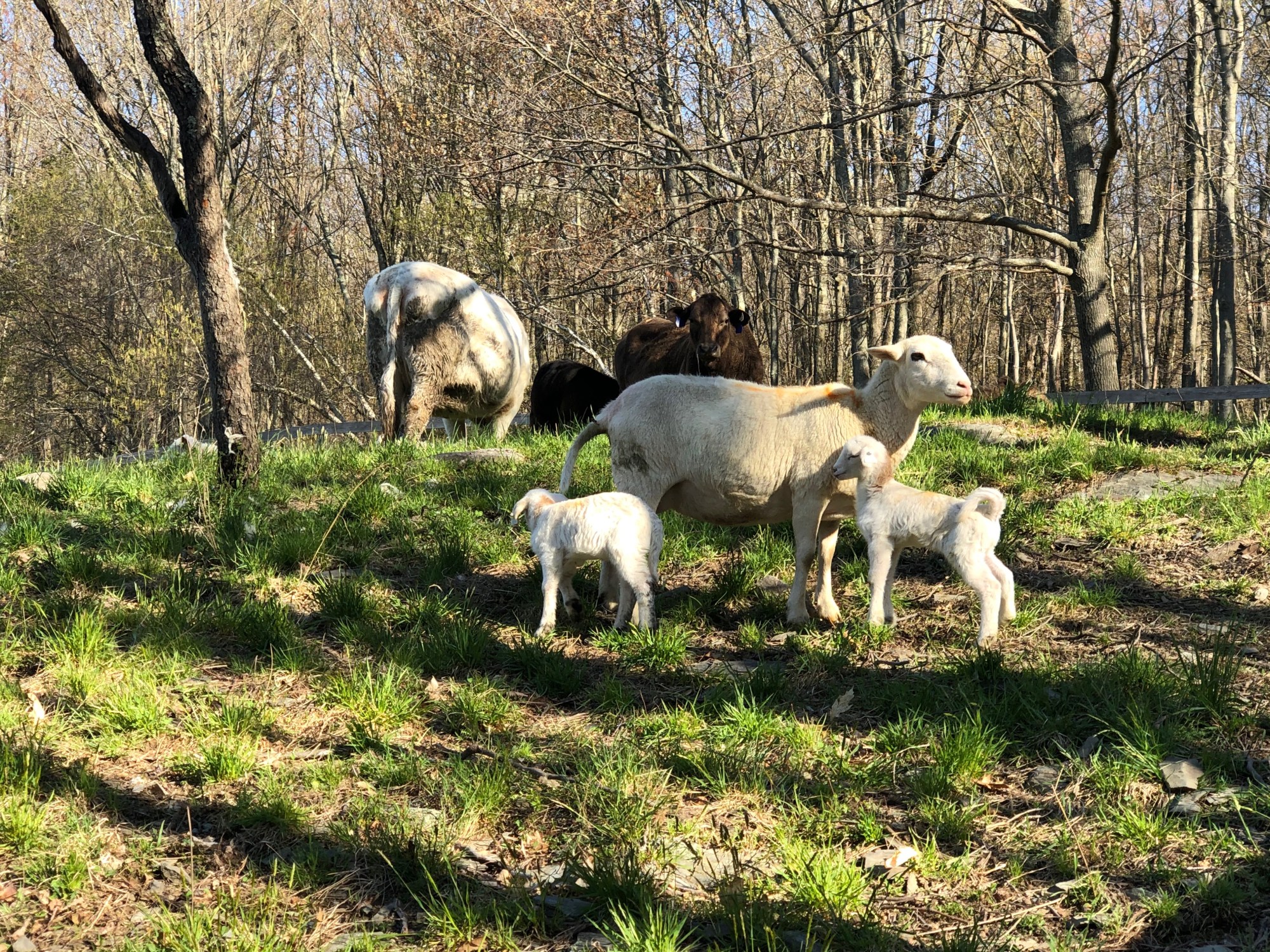Sky High Farm’s story originally appeared in i-D’s The Faith In Chaos Issue, no. 360, Summer 2020. Order your copy here.
“So we’re just getting the vegetable garden ready, the baby animals are being born now, and all that.” Artist Dan Colen is at his 40-acre Sky High Farm in Upstate New York, where spring, “and all that”, is in full swing, regardless of current events around the world affecting those of us who walk on two legs. When I pitched this story, I’d imagined myself and Dan frolicking merrily with his cows (more on them later), but instead I am quarantined on the Lower East Side, while Dan and his team are busy harvesting in order to deliver nutritious food to New Yorkers who don’t have enough.
“I have a farm manager – his name is Sam Rose – and then we have another full-time farmer, who is here all year – Alyssa.” Together, they run Sky High Farm, in New York State’s Columbia County, and which over the past nine years has attempted to redefine farming practices while addressing food insecurity – in other words, feeding people who don’t have enough to eat. To date, they’ve delivered more than 69 tons of meat and vegetables to food banks and pantries throughout the State. Obviously, during the crisis, the issue of hunger is more acute than ever (even in more normal times, 2.4 million New Yorkers suffer from food insecurity, 900,000 of whom are children) and thus Dan, his girlfriend and his small team are having to work out how to get food to people without their usual gang of four or five interns. “We actually have one intern coming back who worked with us last season and we have a close relationship with. She’s arriving tomorrow. We’re going to quarantine her. I’ve got a couple of different sections in my studio that we can turn into apartments.”

Dan’s work, and art world presence, have helped define New York’s art scene for several decades. He first purchased the farm almost a decade ago looking to build a studio, but quickly started to imagine putting the land to use feeding people back in the city who were going hungry. “I moved up here to build a sculpture studio, I wanted some space. And very quickly, and very naturally, it just started feeling wrong having this land just sitting here. And it occurred to me that I should have it produce something. Just being on it gave me this feeling that it could be of use. And so, to build a farm seemed kind of obvious from there.”
And thus he got to work. “The mission seemed to be, ‘OK, I’ll start a garden this big, and next year I’ll make it this big, and I’ll get five more cows and I’ll keep making it bigger and I’ll keep making more food’,” he says of his early idea, which makes it sound all very simple. “When I started this, I really wanted to feed New York City.” Quickly though, he realised he was surrounded by people going without food in the countryside.
“There’s a myth about fresh food security in a rural area. I think, especially in urban areas, we all assume that, ‘Oh, they’re surrounded by farms, even poor people have farms.’ You know? It’s just not true. There’s just as many hungry people here as there are in the city. And the food is just skipping right over them… I was actually driving right past a lot of people who didn’t have food as I was bringing the food down to the city.”

You can however buy a small selection of Sky High Farm’s produce in the city, at Dover Street Market. Not a side of beef and a sack of potatoes (although that would be something), but a selection of tie-dye hoodies, and jars of honey and salt, with nostalgic doodles of smiling moons and bees by illustrator Joana Avillez. It’s an escape-to-the-country fantasy, except you don’t have to actually escape to the country, and all of the profits go to the farm and the organisations which distribute its produce. “I’ve been spending more time with these organisations and really what they all say is that they need more money. Every dollar counts with this kind of stuff.”
Sky High Farm has been organic since day one, and is also regenerative, which means that they actually work to put more back into the earth than they take – more nutrients, more carbon. “Regenerative farming has really become a focus of ours in the last five years, but like I said, we were always doing organic farming.” This approach, which he initially described as coming from a naïve place, obviously doesn’t come without its constraints. However charming they might be.
“We have a fox that has built her den literally in the centre of our pasture. And it’s amazing, we have them fenced in, so the dogs can’t get into the den area. They’ve eaten about 20 of our chickens. And it’s like, we could shoot the fox, obviously. But it doesn’t seem like the right way of dealing with the situation. You try to address these problems in other ways, which are going to be more challenging, and in the short term there may be more lost. But we believe in the long term, we’re going to have a better impact on the landscape here and the food we can produce on it.”

Back to the promised cows. When Dan first bought Sky High Farm, and looked around the empty land he desired to fill, they were one of the first animals he thought of. “There’s other farms in the area with cows, and I love watching cows do their thing. They’re very calming. They have moments in the afternoon where they go on a little gallop and play. But usually they’re just sitting around, eating grass. But at a certain time of day, they’ll walk over to the pond and drink some water and another time of day they’ll clean themselves. So, seeing some of my neighbouring farms and watching the cows, that was really the start of it. I was like, ‘Maybe I could have a cow farm?’”
At this point in time, cramped in our grey city buildings, this sounds like a dream for a lot of people. The dream of being self-sufficient, of having enough food, of space and security. Dan, having a vaguely secure life, wanted to share that bounty, and has gone on to do so on a much larger scale than perhaps he could have imagined, in the meantime becoming a farmer. “I started just having conversations with farmers and the idea developed. But I still love the cows.”
Dan’s 10 tips for getting involved with the fight against food insecurity during the coronavirus pandemic:
- It’s hard to be too specific because each community has its own distinct challenges.
- Reach out to your local network of pantries, food banks and social service providers.
- If you have money to donate, do it. The institutional purchasing power of these organisations is greater than any individual’s.
- See if you can lend your expertise, or simply time, often from your home virtually. Civic groups are using online platforms to organise, but they need humans to answer phones, dispatch volunteers, etc. At Red Hook Responds, for instance, they simply need more folks to man the phone line as operators to receive requests and upload info to the volunteer board.
- Many food banks rely on volunteers, and traditionally these volunteers are often retired seniors – the most vulnerable group in this pandemic. I know in Red Hook we need more drivers during open hours to transport prepared meals, medication and groceries to home-bound people.
- Check in on your neighbours.
- Social distance and prevent more transmission.
- Self care so we can bounce back from this.
- Vote in the next election.
- Donations of money and/or time (where needed or helpful) is at the top of my list.



